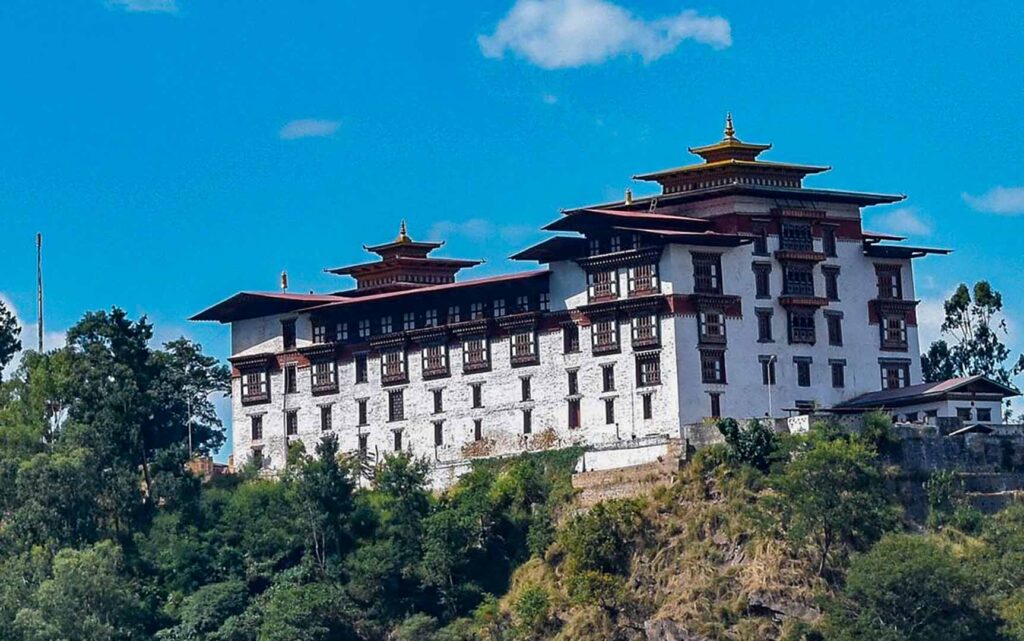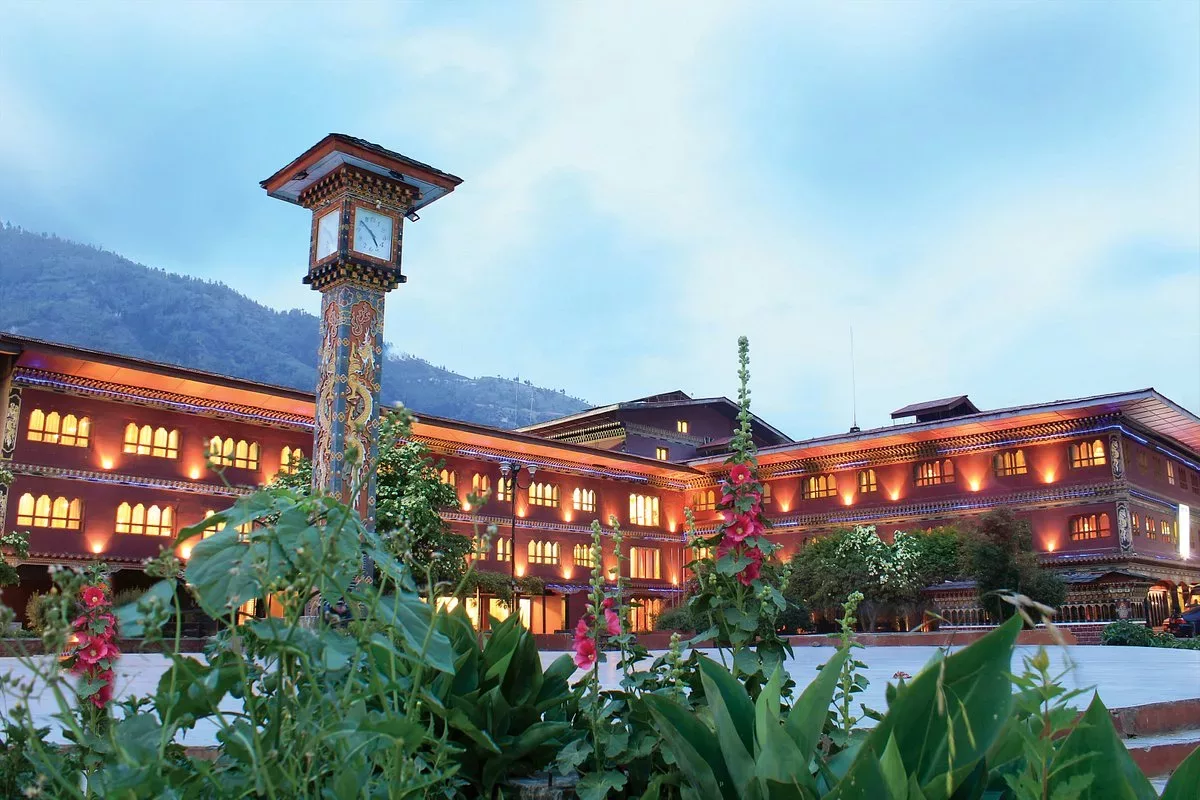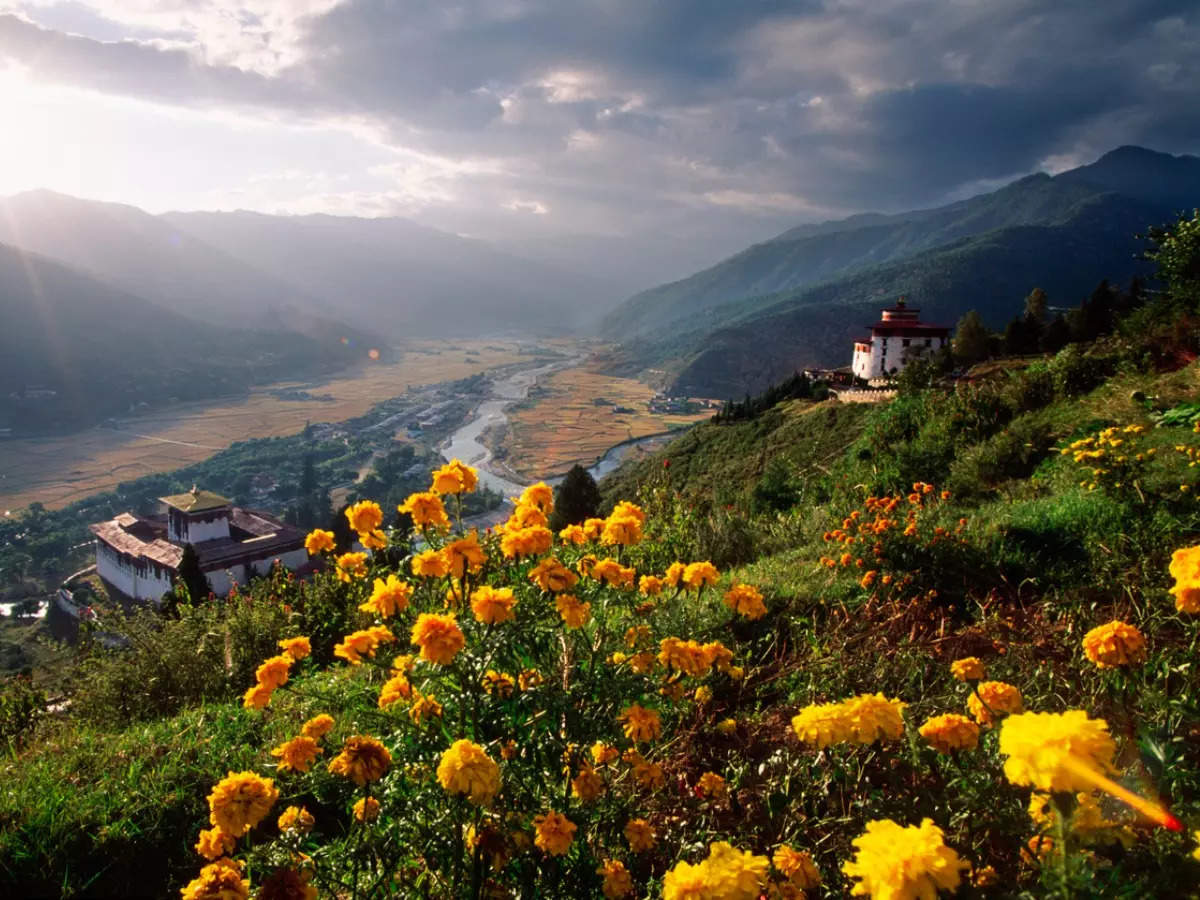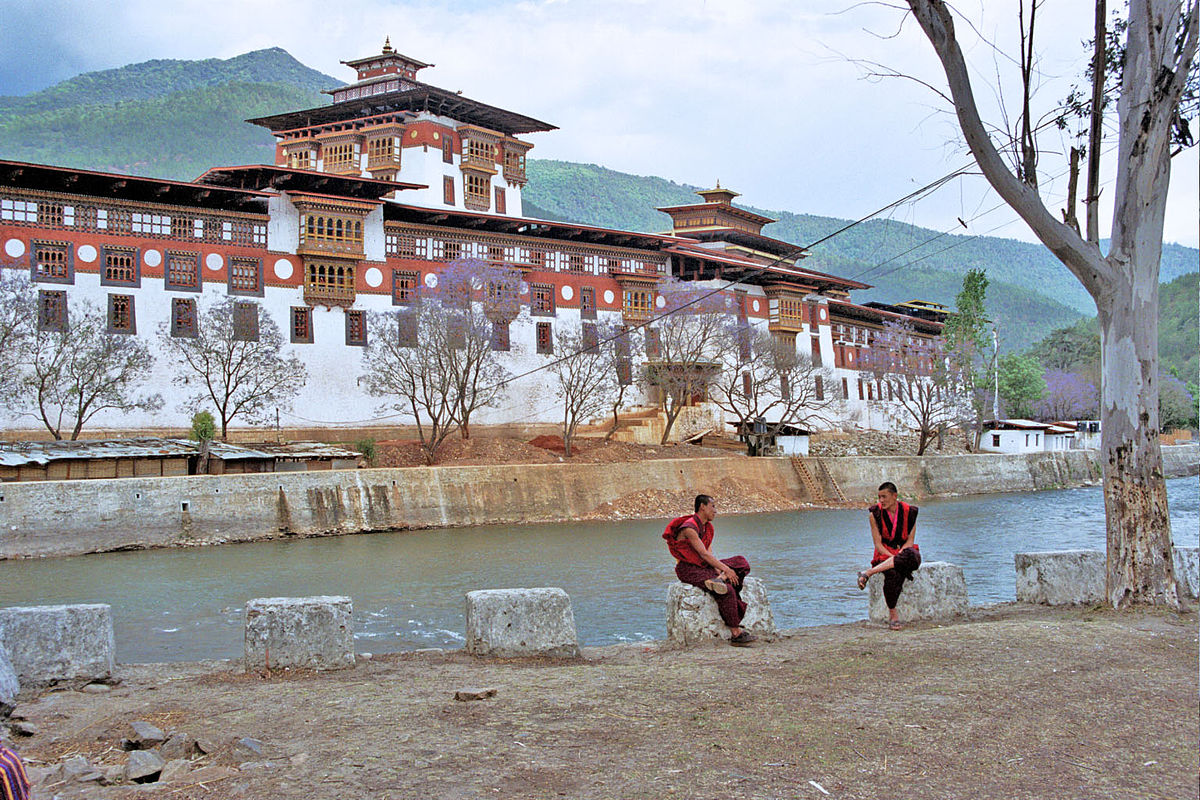Bhutan Family Trip from Hyderabad
Bhutan, with its stunning landscapes, rich culture, and peaceful atmosphere, is an ideal destination for a family trip. Here’s a comprehensive guide to help you plan your journey from Hyderabad to Bhutan, covering all essential aspects from flights to visa requirements, health insurance, itinerary planning, transportation, accommodation, currency, and weather.

Flights from Hyderabad to Bhutan
To reach Bhutan from Hyderabad, you will need to take a connecting flight as there are no direct flights. The most common route is to fly from Hyderabad to Delhi, and from there, catch a flight to Paro International Airport, the only international airport in Bhutan. Here are the steps:
1. Hyderabad to Delhi: There are multiple daily flights from Hyderabad to Delhi operated by various airlines.
2. Delhi to Paro: Druk Air and Bhutan Airlines operate flights from Delhi to Paro. However, these flights are limited, so it’s essential to book well in advance.

*Above Image just for illustration purposes it could be differ from actual
Bhutan family trip from Hyderabad Visa Requirement:
Indian citizens do not need a visa to enter Bhutan. However, you will need an entry permit, which you can obtain upon arrival at the Paro airport or through a registered tour operator. The permit is essential for visiting Thimphu and Paro, while a separate special area permit is required for visiting places like Punakha, Haa Valley, and other regions.
Health Insurance: –
Post-COVID-19, health insurance has become mandatory for all travelers visiting Bhutan. Without valid health insurance, Bhutan will not issue a permit. Ensure your health insurance covers international travel and medical emergencies. Several insurance providers offer travel insurance plans suitable for trips to Bhutan.

Itinerary for Bhutan family trip from Hyderabad:
When planning your itinerary, consider the interests and preferences of your family members. Here’s a suggested itinerary:
1. Thimphu:
The capital city offers a mix of modern amenities and traditional culture. Must-visit places include Tashichho Dzong, Buddha Dordenma, Memorial Chorten, and the Folk Heritage Museum.

2. Paro: Known for the iconic Tiger’s Nest Monastery (Taktsang Monastery), Paro is a must-visit. Other attractions include Paro Dzong, National Museum of Bhutan, and Drukgyel Dzong.

3. Punakha: Famous for the Punakha Dzong, one of the most beautiful dzongs in Bhutan. Also, visit the Punakha Suspension Bridge and Chimi Lhakhang (Fertility Temple).

4. Haa Valley: A less-visited but stunningly beautiful valley. Enjoy scenic drives, traditional Bhutanese villages, and the Lhakhang Karpo and Lhakhang Nagpo temples.
Transportation
In Bhutan, it is mandatory to hire a licensed tour operator to arrange your transportation, accommodations, and guide services. They will provide a private vehicle and a knowledgeable guide to ensure a smooth and comfortable journey. This is part of Bhutan’s policy to promote high-value, low-impact tourism.
Accommodation
Bhutan offers a wide range of accommodation options, from luxury hotels to budget guesthouses. Here are some recommendations:
1. Luxury: Amankora, COMO Uma, Taj Tashi
2. Mid-range: Hotel Druk, Hotel Norbuling, Zhiwa Ling Heritage
3. Budget: Bhutan Boutique Residency, Hotel Thimphu Tower, Damchen Resort
It is advisable to book your accommodations in advance, especially during peak travel seasons (spring and autumn).
Currency and Expenses
The official currency of Bhutan is the Bhutanese Ngultrum (BTN), which is pegged at par to the Indian Rupee (INR). Indian Rupees are widely accepted in Bhutan, but it’s advisable to carry some Bhutanese currency for small purchases. Bhutan follows a high-value, low-impact tourism policy, meaning there is a daily tariff that covers your accommodation, meals, transportation, and guide services. This ensures that tourism benefits the local economy while preserving the country’s cultural heritage and natural environment.
Weather
Bhutan’s climate varies depending on the region and the time of year. Here’s a seasonal breakdown to help you plan your trip effectively:
1. Spring (March to May): This is one of the best times to visit Bhutan. The weather is pleasant, and the landscapes are vibrant with blooming flowers during this time. It’s an excellent season for trekking, sightseeing, and experiencing local festivals like Paro Tshechu.
2. Autumn (September to November): Another ideal time to visit. The weather is clear and cool, perfect for outdoor activities and trekking. The Thimphu Tshechu and Black-Necked Crane Festival in Phobjikha are major attractions.
3. Summer (June to August): This is the monsoon season with warmer temperatures and frequent rainfall. While the scenery is lush and green, some trekking routes might be challenging due to slippery paths.
4. Winter (December to February): Winter can be quite cold, especially in higher elevations. However, it’s a good time to visit if you prefer fewer tourists and want to experience unique festivals like Punakha Tshechu.
Additional Tips for Your Trip
1. Cultural Sensitivity: Bhutan is a deeply spiritual country with a rich cultural heritage.Dress modestly, particularly when visiting religious sites, and show respect for local customs and traditions.
2. Packing Essentials: Depending on the season, pack appropriate clothing. Layered clothing is recommended for varying temperatures. Don’t forget essentials like sunscreen, a hat, comfortable walking shoes, and any personal medications.
3. Health Precautions: Ensure that you have all necessary vaccinations and carry a basic first aid kit. Drink bottled or boiled water and be cautious with street food.
4. Connectivity: While major cities like Thimphu and Paro have good mobile and internet connectivity, it might be limited in remote areas. Inform your family and friends accordingly.
5. Photography: Bhutan is a photographer’s paradise, but always ask for permission before taking photos of people, especially monks and religious ceremonies.
Conclusion
A family trip to Bhutan from Hyderabad offers an enriching experience filled with cultural immersion, natural beauty, and memorable adventures. By planning carefully, considering the interests and needs of your family members, and respecting Bhutan’s customs and regulations, you can ensure a smooth and enjoyable journey. Whether you’re trekking to the Tiger’s Nest, exploring ancient dzongs, or simply soaking in the serene landscapes, Bhutan promises a unique and unforgettable travel experience. So, start planning your Bhutanese adventure and get ready to create lasting memories with your family in this enchanting Himalayan kingdom.

